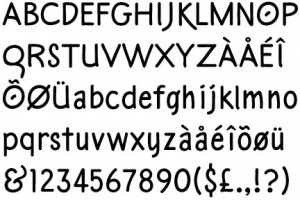Typefaces and Fonts: What is the difference?
One the the most common questions when it comes to typography is what is the difference between typefaces and fonts. Usually, fonts is used as a synonym to typefaces in fact and those who don’t know much about the subject often find themselves confused by the difference between the two.
 Typeface is basically a set of characters with a distinct appearance, usually what you’d call a font. Comic Sans for example is a typeface, but it can include two or more different fonts, for example Italic and Bold versions. Many typefaces have numerous different fonts, but their visual appearance and design is basically the same.
Typeface is basically a set of characters with a distinct appearance, usually what you’d call a font. Comic Sans for example is a typeface, but it can include two or more different fonts, for example Italic and Bold versions. Many typefaces have numerous different fonts, but their visual appearance and design is basically the same.
Fonts can also belong into font families. As an example all characters for “9-point Comic Sans” are called a font, and the “10-point Comic Sans” would be another separate font, but part of the same font family, whereas “9-point Comic Sans boldface” would be another font in a different font family of the same typeface. One individual font character can be referred to as a “piece of font” or a “piece of type”.
Hopefully this short post explains you how to properly use the terms typeface and font. In professional typography the right terms are always used, but still when speaking to someone who doesn’t know much about typography using font instead of typeface isn’t much of a mistake.